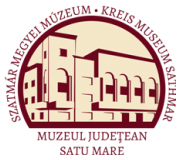Ardelean, Gavril - Buicu, Florin (szerk.): Satu Mare. Studii şi comunicări. Seria ştiinţele naturale 7. (2006)
Medicină
Satu Mare - Studii şi Comunicări Seria Ştiinţele Naturii Voi. VII (2006) accounting training course in 1997. Procedures continued to be coded using a Romanian version of the World Health Organization’s ICPM manual. Therefore, one large university hospital from Cluj was selected to pilot test numerous aspects of what a national full-scale case-mix based budgeting system would require. 7. DRG implementation stages June 2000 — December 2002. June 2000 - December 2000: official launching and political consensus for the project, preparations, site visits, clinical data collection software development, ICD-10 coding training with hospitals, training for project staff. January — June 2001: for the first time in Romania clinical data collection at the patient level, and grouping, analysis, cost data collection at department level, trainings for hospitals, first reports, mid year evaluation of activities and early proposals for 2002 reimbursement for the 23 project hospitals case mix scheme. The DRG pilot project developed at Cluj University hospital, had as its central goal to demonstrate how to use data to examine differences in costs and quality in order to become more efficient while improving high quality of care using a case-based classification system as the basis for payment (for the national project). In terms of obtaining costing data, the project developed a methodology for collecting patient level costs. Specific training on costing was provided for the project and hospital staff in order to collect actual financial hospital data together with specific costing data at the patient level from March 2000 to February 2001. Costs for each DRG were calculated using samples of patients from the selected hospital departments. Both coding and costing data were used in the quality improvement process done at the clinical and ancillary departments; the first initiative of its kind in this field developed in Romania. Most of the lessons learned and the project staff were being integrated and utilized to carry out the fourth and largest case-mix project in Romania — the National DRG Project with 23 hospitals. July — December 2001: improved data collection and software, continuous training ICD 10 coding, cost data collection, data analysis, simulations, consensus on implementation with decision makers — financing for the project 23 hospitals and larger scale dissemination, creation of the Implementation Strategy Team (1ST), legislated proposal for financing implementation. January — June 2002: regular clinical and cost data collection, regular reporting and 300 reimbursement of the 23 hospitals, national scale ICD 10 coding training, data analysis and reports available for the 23 hospitals, quality indicators tun, simulation of “Romanianized” relative weights using aggregated cost data, Romanian relative weights using patient level cost data from one hospitals, regular meetings, discussions and decision about an independent central institution responsible for national scale technical aspects of implementation. June — December 2002: distribution of the clinical data collection software to all hospitals and preparations for data collection starting January 1, 2003, new medical record aligned with the software, distribution of cost data collection software to all hospitals and cost data collection, preparation and agreement of the improved financing policy for 2003 for the existing 23 hospitals, final plan for national scale implementation in place and handed to the central institution. New financing system DRG based pays 276 hospitals (per DRG case) at a rate equivalent to hospital-specific in period 2003 2005 adjusted cost per case. The new financing mechanism wasn’t implemented as it should have, because there were needed improvements of equity and efficiency of the system. From 2005, there is a EU funded project that supports R&D and technical assistance for DRG system development. 8. Implementation of hospital cost accounting in Romania Before 1997 in Romania, the idea and interest of cost accounting in hospitals was almost inexistent. After 1997 (when it was realized the purchaser-provider split), in order to succeed in keeping the expenditures at an appropriate level, the central institutions and hospitals started to develop a cost accounting mechanism for different types of costs (department level, patient level). The goal was to increase the capacity of Romanian hospitals in having cost accounting mechanisms that will be used for hospital management and an increased transparency in usage of resources. One of the main aspects of the Romanian health care reform over the last decade was to improve resource management in order to improve efficiency and quality of the health services. The implementation of cost accounting system faced important challenges: poor understanding of the role of accounting, poor experience in the cost accounting area (few people with expertise in this field), initially lack of interest on the hospital side,
